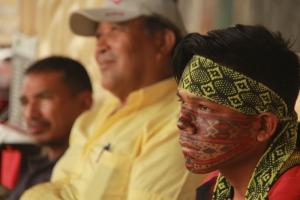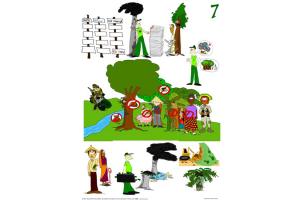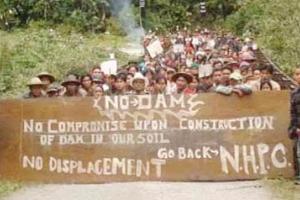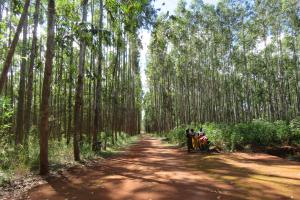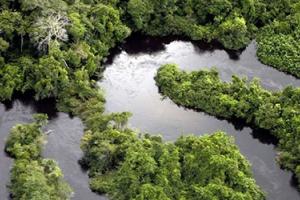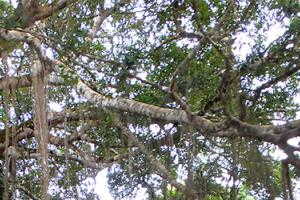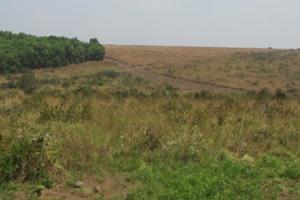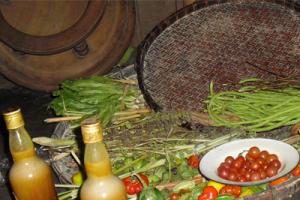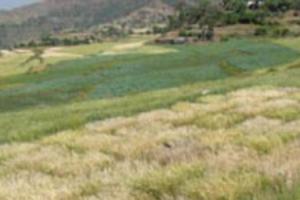We, forest dwellers, rubber tappers, Apurinã, Huni Kui, Jaminawa, Manchineri and Shawadawa indigenous people, members of supportive organizations and the Jesuit Travelling Team, teachers from different universities, united in the city of Xapuri in the Brazilian state of Acre from 26 to 28 May 2017, at the meeting "The effects of environmental / climatic policies on traditional populations", declare:
- That, at this moment of resurgence, we are unifying the struggles of indigenous peoples and rubber tappers in the same cause. Our union is our main weapon against capital.
The Green Economy
The Green Economy is a tactic used to “clean up” the image of corporations rather than address corporate capture and capitalism as the true drivers of deforestation. False solutions promoted under the Green Economy include certification, sustainable forest management, ecosystem services, REDD+, the bioeconomy, nature-based climate solutions, and zero net deforestation. Rather than stopping it, these “solutions” support corporate-driven destruction that is causing a deep social and ecological crisis.
Bulletin articles
15 May 2017
How do major oil palm companies manage to get their palm oil sold as a “green”, “sustainable” and “climate-friendly” product when it is none of that? How does this green image help corporations to expand even further, as is happening now in Africa? This article looks into the case of OLAM International, which in February 2017 published its Draft Global Policy on Forests (1). OLAM's promising words are merely a smokescreen around what is still its main objective: increasing profits.
Have oil palm companies changed?
Publications
10 May 2017
Seven flipchart posters and a booklet to help community activists to explain why REDD+ is not really about forests.
Bulletin articles
4 April 2017
The region typically known as “India’s North East” or also referred to as just “North East” is linked tenuously with mainland India by a roughly 20 kilometer-wide land bridge, and surrounded by Nepal, Bhutan, China, Myanmar and Bangladesh. There are over 200 indigenous and tribal communities living in this region, most of whom share similarities in culture, food, clothing, economy and polity, and evolved diverse laws and institutions specific to each tribe.
Bulletin articles
8 February 2017
Bulletin articles
7 February 2017
Bulletin articles
7 February 2017
In December 2015, the Paris Agreement was celebrated with great fanfare. This agreement, part of the United Nations Framework Convention on Climate Change (UNFCCC), establishes new measures to reduce Greenhouse Gas Emissions, which are responsible for global warming.
Bulletin articles
6 February 2017
Bulletin articles
8 December 2016
Bulletin articles
8 December 2016
At a meeting in a wixárika community in Jalisco, México, with organizations and villagers from other areas, the language we used to communicate was Spanish. We discussed threats to territories, corn, transgenics, agrochemicals, “biopiracy” and the patenting of plants and indigenous knowledge. Most participants were wixáritari (called huicholes in Spanish). During the meeting, they talked amongst themselves in their language. They say words like “transgenics” and “biopiracy” in Spanish.
Bulletin articles
8 December 2016
Skilful selection and nurturing of the seeds best suited to a particular location are at the heart of peasant farming and agroforestry systems. The resulting agrobiodiversity of hundreds of thousands of crop varieties and animal races found in peasants' fields around the globe provides the corner stone of the world’s food system. Peasant farmers and the local varieties that they developed are still feeding the majority of us.
